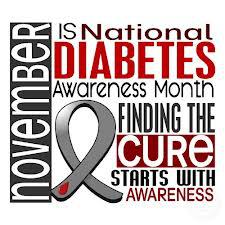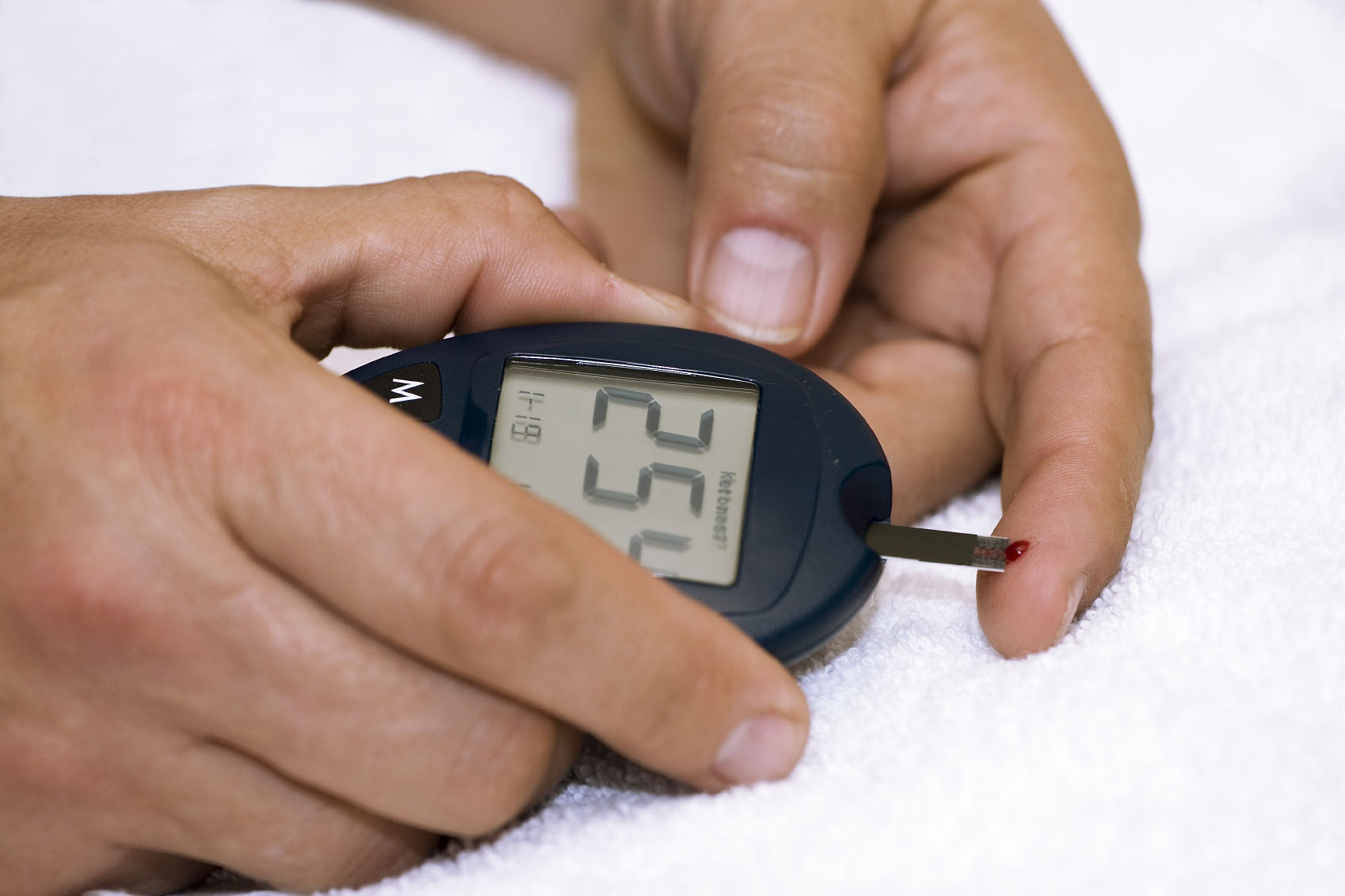November is National Diabetes Awareness month.
 In an effort to learn more about this serious and devastating disease, my next 2 posts will focus on diabetes. I hope to help by increasing your understanding so that if you or someone you know has symptoms, you can get help.
In an effort to learn more about this serious and devastating disease, my next 2 posts will focus on diabetes. I hope to help by increasing your understanding so that if you or someone you know has symptoms, you can get help.
Here’s how the American Diabetes Association defines it: Diabetes is a problem with your body that causes blood glucose (sugar) levels to rise higher than normal. This is also called hyperglycemia. Type 2 diabetes is the most common form of diabetes.
In type 2 diabetes, your body does not use insulin properly. This is called insulin resistance. At first, your pancreas makes extra insulin to make up for it. But, over time it isn’t able to keep up and can’t make enough insulin to keep your blood glucose at normal levels. Type 2 is treated with lifestyle changes, oral medications, and insulin.
Two problems can occur when glucose builds up in the blood instead of going into cells:
- Initially, your cells may be starved for energy.
- Over time, high blood glucose levels can damage your eyes, kidneys, nerves, or heart.
Let’s start with some descriptions to clearly define the basics and eliminate any confusion.
Glucose – The food you eat gets digested and broken down into a sugar your body’s cells can use. This is glucose, one of the simplest forms of sugar.
Insulin – A hormone that helps the body use glucose for energy. The beta cells of the pancreas make insulin. When the body cannot make enough insulin, it is taken by injection or through use of an insulin pump.
Blood glucose – The main sugar found in the blood and the body’s main source of energy. Also called blood sugar.
Insulin resistance – The body’s inability to respond to and use the insulin it produces. Insulin resistance may be linked to obesity, hypertension, and high levels of fat in the blood. This occurs most often in people with type 2 diabetes. But people with type 1 diabetes can have insulin resistance too.
Some people with type 2 diabetes can control their blood glucose with healthy eating and maintaining an active lifestyle. But they may also require oral medications or insulin to meet their target blood glucose levels, which is prescribed by a doctor.
The aim of treatment is to normalize the blood glucose in an attempt to prevent or minimize complications. Type 2 diabetes requires good dietary control including the restriction of calories, lowered consumption of simple carbohydrates and fat, with increased consumption of complex carbohydrates and fiber.
Regular aerobic exercise is also an important method for treating both type 2 diabetes since it decreases insulin resistance and helps burn excessive glucose. Regular exercise also may help lower blood lipids and reduce some effects of stress. Both are important factors in treating diabetes and preventing complications.
Here are some key things to know about diabetes.
- Diabetes is a long-term condition that causes high blood sugar levels.
- In 2013 it was estimated that over 382 million people throughout the world had diabetes.
- Type 1 Diabetes – the body does not produce insulin. Approximately 10% of all diabetes cases are type 1.
- Type 2 Diabetes – the body does not produce enough insulin for proper function. Approximately 90% of all cases of diabetes worldwide are of this type.
- Gestational Diabetes – this type affects females during pregnancy.
- The most common diabetes symptoms include frequent urination, intense thirst and hunger, weight gain, unusual weight loss, fatigue, cuts and bruises that do not heal, male sexual dysfunction, numbness and tingling in hands and feet.
- If you have Type 1 and follow a healthy eating plan, do adequate exercise, and take insulin, you can lead a normal life.
- Type 2 patients need to eat healthily, be physically active, and test their blood glucose. They may also need to take oral medication, and/or insulin to control blood glucose levels.
- As the risk of cardiovascular disease is much higher for a diabetic, it is crucial that blood pressure and cholesterol levels are monitored regularly.
- As smoking might have a serious effect on cardiovascular health, diabetics should stop smoking.
- Hypoglycemia – low blood glucose – can have a bad effect on the patient. Hyperglycemia – when blood glucose is too high – can also have a bad effect on the patient.
The American Diabetes Association is celebrating it’s 75th anniversary. Their Mission: To prevent and cure diabetes and to improve the lives of all people affected by diabetes. – See more at: http://www.diabetes.org/#sthash.OdtaZa3u.dpuf, or call 1-800-DIABETES.
If you would like to donate to the American Diabetes Association, go to: https://donations.diabetes.org/site/Donation2;jsessionid=535965D2E7B2E2C7FC5F286A8F4B5BF7.app211b?df_id=15020&15020.donation=form1&loc=header&s_src=dorg&s_subsrc=donate-now
The information contained in this blog is not medical advice. It is solely for the purpose of providing information about diabetes. You should seek help from your doctor or a trained medical professional if you have any questions or suspect that you have diabetes.
Thank you for sharing your time with me. I’d love for you to let me know what you think by leaving a comment. Is the content valuable and helpful? Did anything resonate? Will you take action? What else would you like to see in future posts?
If you know someone that can benefit from this content, I’d be eternally grateful if you would share this with them. And if you like what you see, you can SUBSCRIBE for automatic updates, LIKE US on Facebook, and spread the word about www.thin2win.net with your friends, family and social circles.


